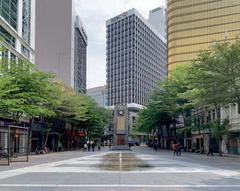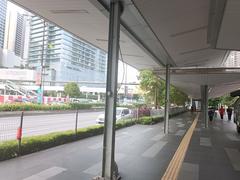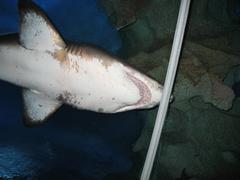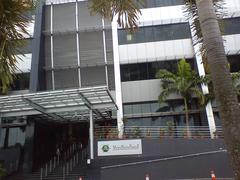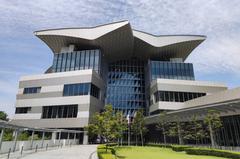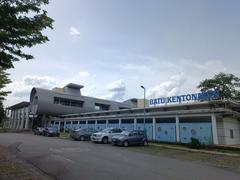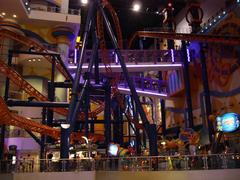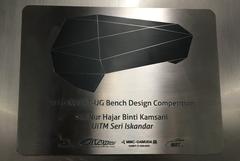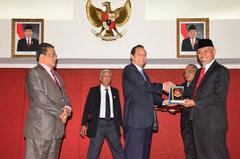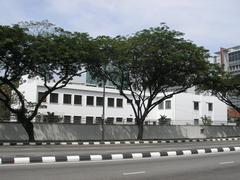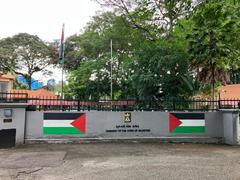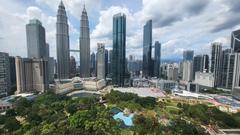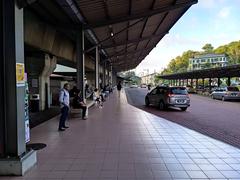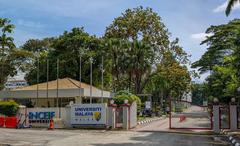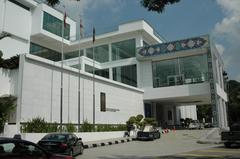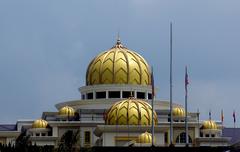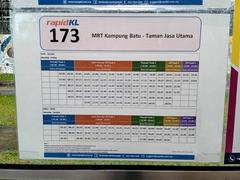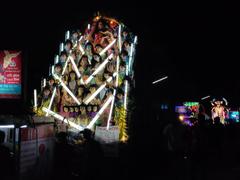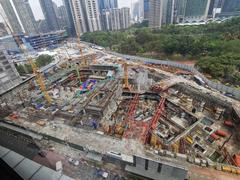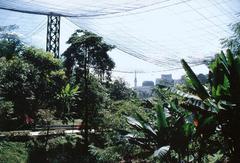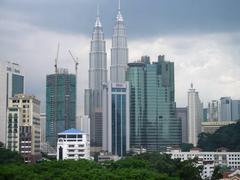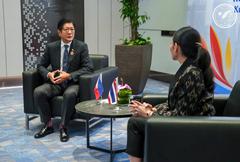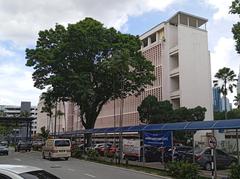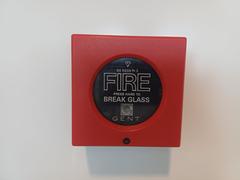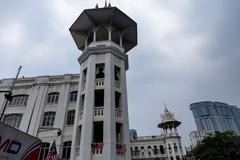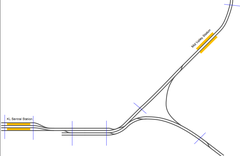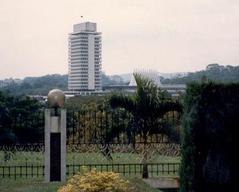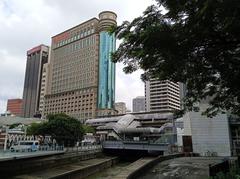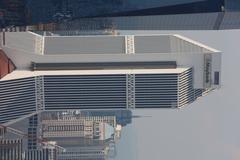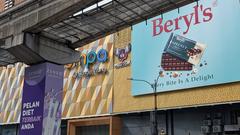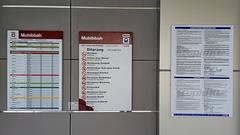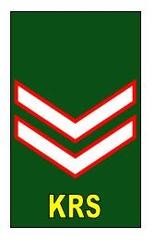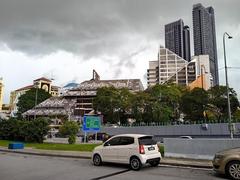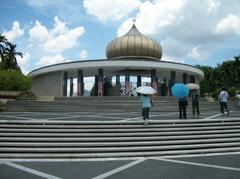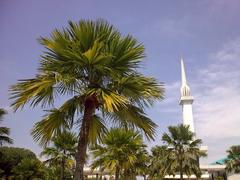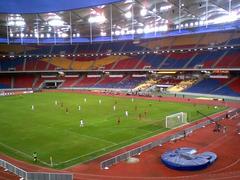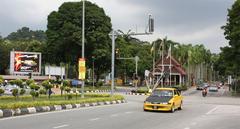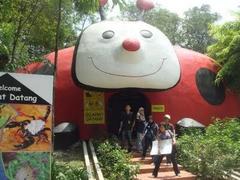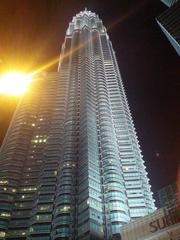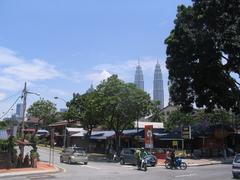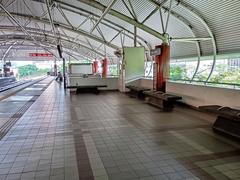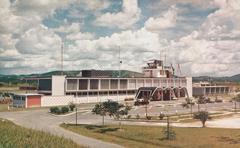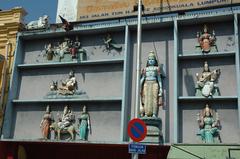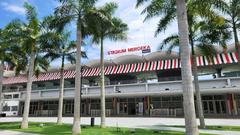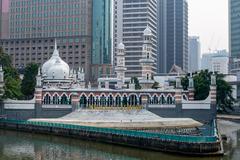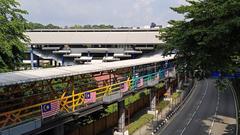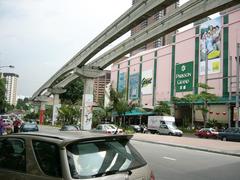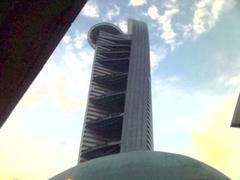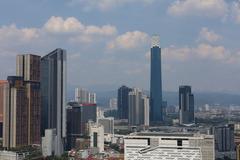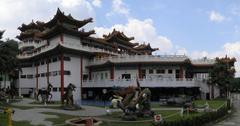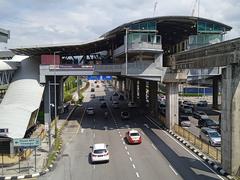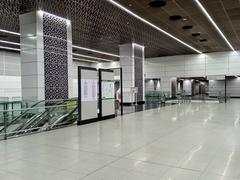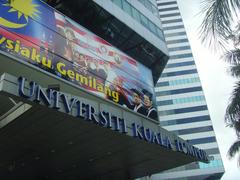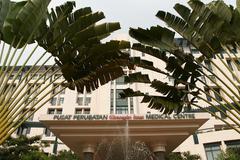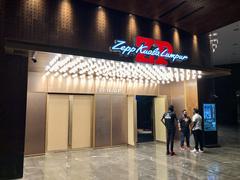
Masjid Jamek Lookout Point at River of Life in Kuala Lumpur: Visitor’s Guide
Date: 31/07/2024
Introduction
Masjid Jamek, also known as Masjid Jamek Sultan Abdul Samad, stands as one of Kuala Lumpur’s most iconic and historically significant landmarks. Situated at the confluence of the Klang and Gombak rivers, this mosque marks the very spot where the British flag was first raised in 1874, signifying the onset of British colonial rule in Malaysia (Malaysia Travel). Designed by British architect Arthur Benison Hubback, the mosque showcases a stunning blend of Moorish, Indian, and Islamic architectural styles, making it a visual and cultural marvel (Facts.net). Officially opened in 1909 by Sultan Alaeddin Suleiman Shah, the mosque has served not only as a place of worship but also as a community center offering various programs and services for the local Muslim population (Malaysia Travel). The River of Life project, an urban river restoration initiative, has further accentuated the mosque’s significance by transforming its surroundings into a vibrant and picturesque public space (Veganderlust). This guide aims to provide comprehensive insights into the historical, architectural, and cultural facets of Masjid Jamek, along with practical information for visitors.
Historical Background of Masjid Jamek Lookout Point @ River of Life, Kuala Lumpur, Malaysia
Early Beginnings and British Influence
Masjid Jamek, located at the confluence of the Klang and Gombak rivers, is historically significant as the spot where the British flag was first raised in 1874, marking the beginning of British colonial rule in the region (Malaysia Travel). This event was pivotal in Kuala Lumpur’s history, setting the stage for the city’s rapid development in the early 20th century.
Architectural Marvel
The mosque was designed by Arthur Benison Hubback, a British architect known for his work in British Malaya. Hubback’s design for Masjid Jamek is an exquisite blend of Moorish, Indian, and Islamic architectural styles. The mosque features distinctive onion-shaped domes and minarets, creating a serene and visually captivating atmosphere (Facts.net). The use of bright white marble, detailed carvings, and mosaics enhances its aesthetic appeal.
Official Opening and Early Years
Masjid Jamek was officially opened in 1909 by Sultan Alaeddin Suleiman Shah, the fifth Sultan of Selangor. The mosque quickly became the central house of worship for the Muslim community in Kuala Lumpur. The name “Jamek” is derived from the Arabic word “Jami,” which translates to a place where the community gathers for worship (Malaysia Travel).
Role as a Community Center
Beyond its function as a place of worship, Masjid Jamek has historically served as a community center. It offers an array of programs and services, including religious classes, community events, and social welfare programs. This makes the mosque a vital part of the local Muslim community, providing a space for prayer, learning, and socializing (Malaysia Travel).
National Heritage Site
In recognition of its cultural and historical significance, Masjid Jamek was designated as a National Heritage Site in 1994. This designation underscores the mosque’s importance as a symbol of Malaysia’s rich Islamic heritage and its role in the country’s history (Facts.net).
The River of Life Project
The River of Life project, an urban river restoration initiative, has further enhanced the historical and cultural significance of Masjid Jamek. The project aims to transform the Klang and Gombak river basins into dynamic and habitable waterfront areas with high economic value. The mosque’s location at the confluence of these rivers makes it a focal point of the project, offering visitors a picturesque setting and a unique view of Kuala Lumpur’s oldest mosque (Veganderlust).
Symbolic Confluence
The unique location of Masjid Jamek at the confluence of the Klang and Gombak rivers symbolizes the harmonious unity of different cultures and traditions. This symbolic confluence is a testament to Kuala Lumpur’s diverse cultural heritage and the mosque’s role in promoting interfaith harmony (Facts.net).
Architectural Influence
The architectural design of Masjid Jamek has influenced many modern mosques in Malaysia and beyond. Its blend of Moorish, Indian, and Islamic styles has set a precedent for mosque architecture in the region, making it a significant architectural landmark (Facts.net).
The Cenotaph Monument
Within the mosque courtyard, there is a cenotaph monument dedicated to the memory of those who lost their lives during World War I. This monument adds another layer of historical significance to the mosque, serving as a reminder of the sacrifices made during the war (Facts.net).
Modern Enhancements
Recent enhancements to the mosque and its surroundings, such as the addition of the Blue Pool and improved walkways, have made Masjid Jamek an even more attractive destination for tourists. The Blue Pool, part of the River of Life project, features captivating light displays that illuminate the mosque and its surroundings, creating a magical scene, especially at night (Eris Goes To).
Visitor Information
Visiting Hours and Tickets
Masjid Jamek is open to visitors from 9:00 AM to 5:00 PM daily, except during prayer times. There is no admission fee, but donations are appreciated to help with the mosque’s upkeep.
Accessibility
The mosque is easily accessible via public transportation, with the Masjid Jamek LRT station located just a short walk away. Visitors of all faiths are welcome to enter the mosque and admire its stunning architecture and peaceful ambiance.
Special Events and Guided Tours
The mosque offers guided tours that provide deeper insights into its history and architectural significance. Special events, such as Islamic festivals and religious classes, are also held regularly, enriching the visitor experience.
Conclusion
Masjid Jamek stands as a testament to Kuala Lumpur’s rich history, architectural beauty, and cultural diversity. Whether you are a history enthusiast, an architecture lover, or simply seeking a peaceful place for spiritual reflection, Masjid Jamek offers a truly extraordinary experience.
FAQ
What are the visiting hours for Masjid Jamek?
Masjid Jamek is open daily from 9:00 AM to 5:00 PM, except during prayer times.
Is there an admission fee to visit Masjid Jamek?
No, there is no admission fee, but donations are appreciated.
How can I get to Masjid Jamek?
Masjid Jamek is easily accessible via the Masjid Jamek LRT station.
Are guided tours available?
Yes, guided tours are available and provide deeper insights into the mosque’s history and architecture.
Can non-Muslims visit Masjid Jamek?
Yes, visitors of all faiths are welcome to visit and admire the mosque’s architecture.
Conclusion
Masjid Jamek, with its rich history and stunning architecture, offers a unique glimpse into Kuala Lumpur’s cultural and religious heritage. The mosque’s role as both a place of worship and a community hub underscores its enduring significance to the local Muslim community. The River of Life project has elevated the mosque’s surroundings, making it a must-visit destination for both locals and tourists. Whether you’re drawn by its historical importance, architectural beauty, or the serene ambiance it offers, Masjid Jamek provides a multifaceted experience that is both enriching and memorable. For those planning a visit, the mosque’s accessibility via public transportation, along with its picturesque setting and modern enhancements like the Blue Pool, make it an easily reachable and visually captivating destination (Eris Goes To). Be sure to explore the nearby attractions, including the Sultan Abdul Samad Building and Dataran Merdeka, to fully appreciate the historical and cultural tapestry of Kuala Lumpur (Shoot Planet).
